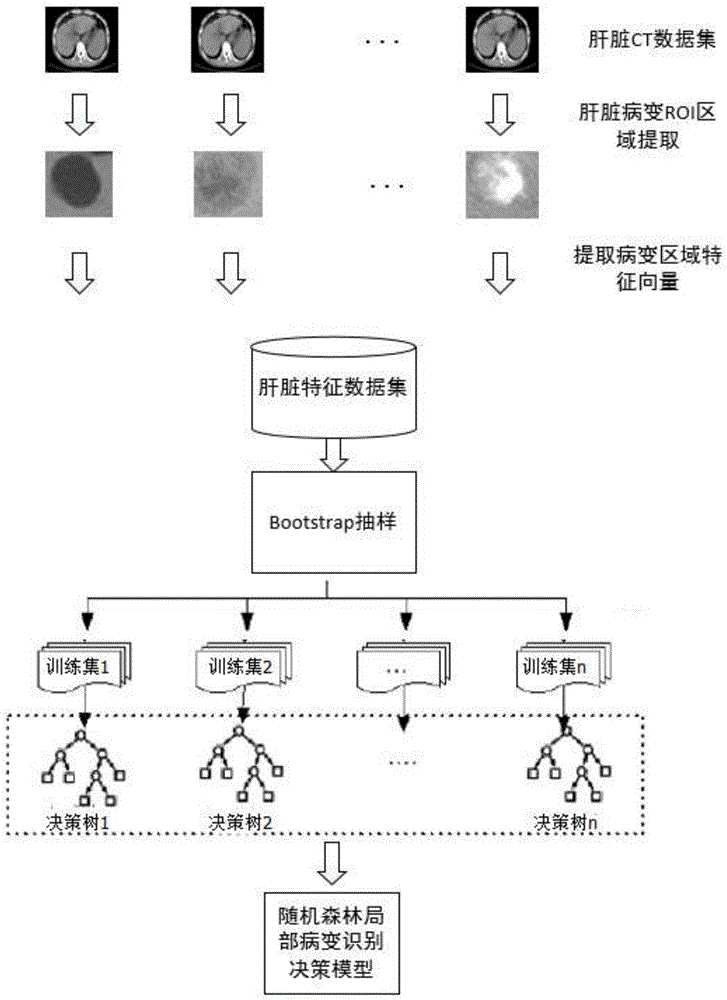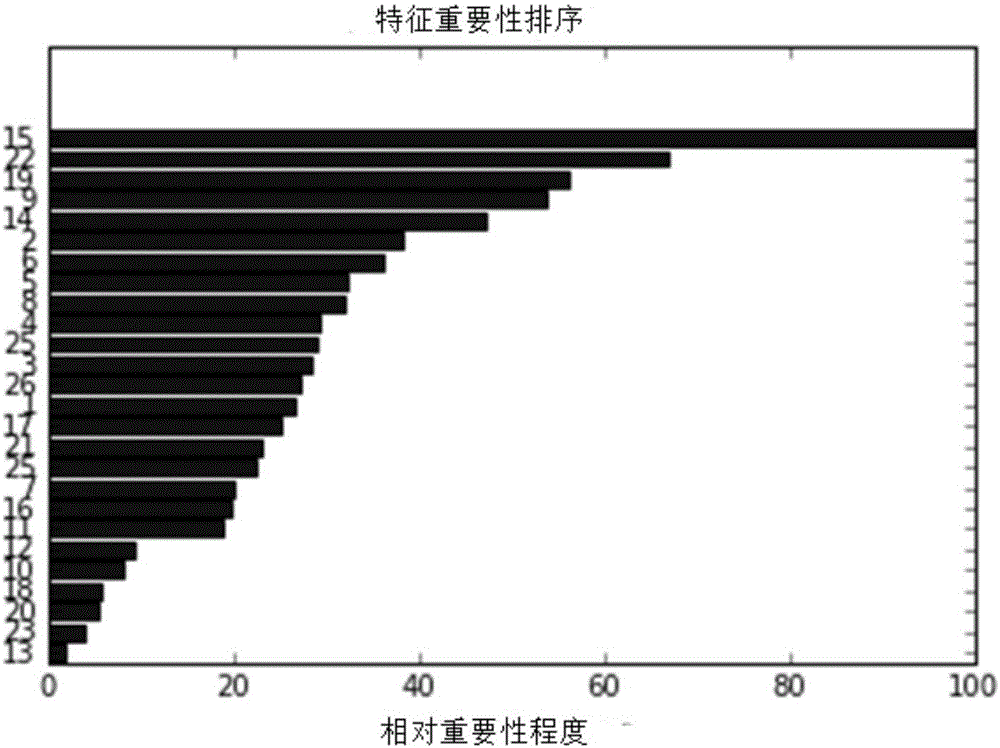Pathology identification method for routine scan CT image of liver based on random forests
A random forest algorithm and CT image technology, applied in the field of lesion recognition in plain CT images of the liver, can solve problems such as misdiagnosis, slow postoperative recovery, missed treatment time, etc., achieve great medical value and reduce the effect of error rate
- Summary
- Abstract
- Description
- Claims
- Application Information
AI Technical Summary
Problems solved by technology
Method used
Image
Examples
Embodiment Construction
[0031] In order to realize the identification of local lesions in liver plain scan CT images of the present invention, the following two stages are adopted.
[0032] The first stage: establishment of lesion identification model based on random forest algorithm
[0033] 1. Establishment of image feature data set of local lesion area in plain CT image of liver:
[0034] The present invention uses 3,000 plain liver CT images marked from a hospital in Hangzhou, all of which are 512*512 in size, including several types such as normal, liver cancer, hepatic hemangioma, and liver cyst, etc., and extracts a rectangular frame that can cover the marked lesion area As the region of interest, 3000 lesion block images are obtained in this way.
[0035] For each lesion area block, calculate the gray histogram, gray level co-occurrence matrix and gray level gradient co-occurrence matrix of the lesion block image.
[0036] For the lesion block image, the calculation method of the gray histo...
PUM
 Login to View More
Login to View More Abstract
Description
Claims
Application Information
 Login to View More
Login to View More - R&D
- Intellectual Property
- Life Sciences
- Materials
- Tech Scout
- Unparalleled Data Quality
- Higher Quality Content
- 60% Fewer Hallucinations
Browse by: Latest US Patents, China's latest patents, Technical Efficacy Thesaurus, Application Domain, Technology Topic, Popular Technical Reports.
© 2025 PatSnap. All rights reserved.Legal|Privacy policy|Modern Slavery Act Transparency Statement|Sitemap|About US| Contact US: help@patsnap.com



